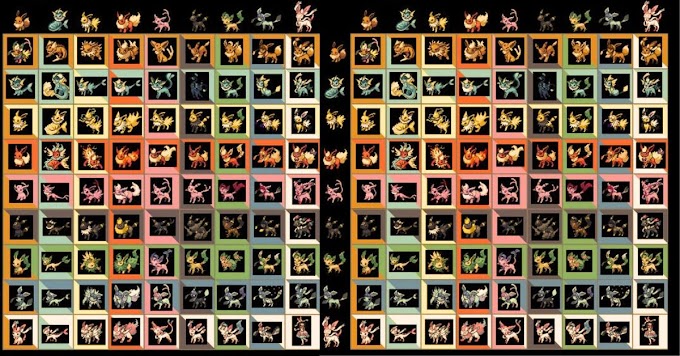Microcoulombs to Coulombs Converter
The concept of electrical charge is fundamental to understanding the behaviour of electrical systems. In the realm of charge measurement, two commonly used units are micro coulombs and coulombs. This blog post aims to shed light on what micro coulombs and coulombs are, their historical origins, the relationship between the two units, and how to effectively convert microcoulombs to coulombs.
How to Use Microcoulombs to Coulombs Calculator
Microcoulombs to Coulombs:
- If you have a value in Microcoulombs (a smaller unit), you can put that value in the provided box and click "Calculate." It will show you the value in Coulombs (a larger unit).
Coulombs to Microcoulombs:
- If you want to convert Coulombs (a larger unit) to Microcoulombs (a smaller unit), you can click the "Swap Units" button, put the value in Coulombs in the box, and click "Calculate." It will then show you the value in Microcoulombs.
See Also: Fintechzoom Mortgage Calculator
What is Microcoulombs?
Microcoulombs (µC) is a unit of electrical charge derived from the coulomb, denoted by the symbol µC. It is a subunit of a coulomb, representing one millionth (1/1,000,000) of a coulomb. This tiny unit of charge is essential for measuring small electrical charges in various scientific and engineering applications.
History of Microcoulombs
The microcoulomb was first introduced as a unit of charge in the late 19th century, as part of the metric system of units. The metric system standardized the measurement of electrical quantities, making it easier for scientists and engineers to communicate and collaborate on electrical projects.
What is Coulomb?
A coulomb (C) is the standard unit of electrical charge in the International System of Units (SI). One coulomb is defined as the amount of electric charge transported by a current of one ampere in one second. This unit is named after the French physicist Charles-Augustin de Coulomb, who made significant contributions to the field of electromagnetism.
History of Coulomb
Charles-Augustin de Coulomb, an 18th-century French physicist, is renowned for his pioneering work on electrical and magnetic interactions. Coulomb's law, which describes the force between electrically charged particles, and his extensive research on electrostatics, led to the naming of the unit "Coulomb" in his honour.
How Many Microcoulombs Are in a Coulomb?
To understand the relationship between micro coulombs and coulombs, it's crucial to note that one coulomb is equivalent to one million microcoulombs, or 1 C = 1,000,000 µC.
Microcoulombs to Coulomb Conversion Formula
Microcoulombs to Coulomb Conversion Example
Let's illustrate this conversion with an example. Suppose we have 500,000 microcoulombs (500,000 µC). Using the conversion formula:
How to Convert Microcoulombs to Coulombs
Converting microcoulombs to coulombs is a matter of dividing the microcoulomb value by one million, as shown in the conversion formula above.
Microcoulombs to Coulombs Conversion Table
| Microcoulombs | Coulombs |
|---|---|
| 1 μC | 0.000001 C |
| 2 μC | 0.000002 C |
| 3 μC | 0.000003 C |
| 4 μC | 0.000004 C |
| 5 μC | 0.000005 C |
| 6 μC | 0.000006 C |
| 7 μC | 0.000007 C |
| 8 μC | 0.000008 C |
| 9 μC | 0.000009 C |
| 10 μC | 0.00001 C |
| 100 μC | 0.0001 C |
| 1,000 μC | 0.001 C |
| 10,000 μC | 0.01 C |
| 100,000 μC | 0.1 C |
| 1,000,000 μC | 1 C |
Coulombs to Microcoulombs Conversion Table
| Coulombs (C) | Microcoulombs (µC) |
|---|---|
| 0.1 | 100,000 |
| 0.5 | 500,000 |
| 1.0 | 1,000,000 |
| 2.5 | 2,500,000 |
FAQs
Q1: Can you convert micro coulombs to other charge units?
Yes, microcoulombs can be converted to other charge units, such as picocoulombs (pC) or nanocoulombs (nC), using appropriate conversion factors.
Q2: Are microcoulombs used in everyday electrical measurements?
Microcoulombs are commonly used in scientific and engineering applications to measure small amounts of charge, especially in electronics and microelectronics.
Q3: How are microcoulombs abbreviated?
Microcoulombs is often abbreviated as µC or uC.
Q4: What are some real-world applications of microcoulombs?
Microcoulombs find applications in various fields, including medical devices, electronics, telecommunications, and sensor technologies.
Q5: Is the conversion from microcoulombs to coulombs always accurate?
Yes, the conversion from microcoulombs to coulombs is accurate, assuming the correct conversion factor of 1,000,000 is used.
Q6: Can you convert negative microcoulombs to coulombs?
Yes, negative micro coulombs can be converted to coulombs following the same conversion formula, treating the negative sign appropriately.
Conclusion
Understanding how to convert microcoulombs to coulombs is fundamental for anyone working with electrical charge measurements. Microcoulombs, as a subunit of the coulomb, play a crucial role in quantifying small amounts of electrical charge. By grasping the simple conversion formula and utilizing the provided tables, professionals and enthusiasts can seamlessly transition between these units, facilitating accurate measurements and efficient electrical system design. Stay charged and keep converting!




